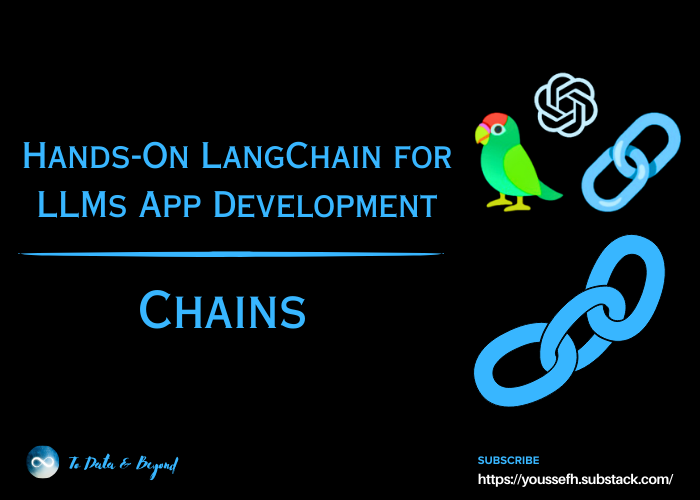
Understanding LangChain Chains for Large Language Model Application Development
Last Updated on April 8, 2024 by Editorial Team
Author(s): Youssef Hosni
Originally published on Towards AI.
Hands-On LangChain for LLMs App Development: Chains
One of the fundamental pillars of LangChain, as implied by its name, is the concept of “chains.” These chains typically integrate a large language model (LLM) with a prompt.
Through these chain structures, you have the ability to assemble multiple building blocks, enabling the execution of a series of operations on your text or other data.
This article will delve into the significance of these chains, ranging from basic forms like the Simple Sequential Chain to more sophisticated variations such as the Router Chain, elucidated with practical illustrations.
Setting Up Working Environment & Getting StartedLLM ChainSequential Chains3.1. Simple Sequential Chain3.2. Complex Sequential ChainRouter Chain
Most insights I share in Medium have previously been shared in my weekly newsletter, To Data & Beyond.
If you want to be up-to-date with the frenetic world of AI while also feeling inspired to take action or, at the very least, to be well-prepared for the future ahead of us, this is for you.
U+1F3DDSubscribe belowU+1F3DD to become an AI leader among your peers and receive content not present in any other platform, including Medium:
Data Science, Machine Learning, AI, and what is beyond them. Click to read To Data & Beyond, by Youssef Hosni, a…
youssefh.substack.com
We will start by loading the environment… Read the full blog for free on Medium.
Join thousands of data leaders on the AI newsletter. Join over 80,000 subscribers and keep up to date with the latest developments in AI. From research to projects and ideas. If you are building an AI startup, an AI-related product, or a service, we invite you to consider becoming a sponsor.
Published via Towards AI
Take our 90+ lesson From Beginner to Advanced LLM Developer Certification: From choosing a project to deploying a working product this is the most comprehensive and practical LLM course out there!
Towards AI has published Building LLMs for Production—our 470+ page guide to mastering LLMs with practical projects and expert insights!

Discover Your Dream AI Career at Towards AI Jobs
Towards AI has built a jobs board tailored specifically to Machine Learning and Data Science Jobs and Skills. Our software searches for live AI jobs each hour, labels and categorises them and makes them easily searchable. Explore over 40,000 live jobs today with Towards AI Jobs!
Note: Content contains the views of the contributing authors and not Towards AI.














